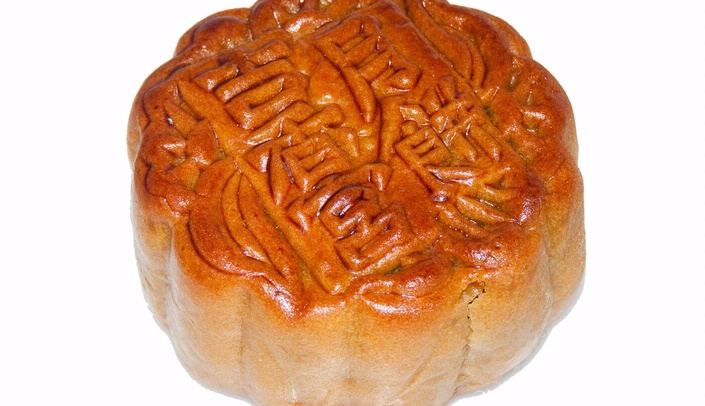One of China’s national holidays is Mid-Autumn Festival (in Mandarin: Zhongqiu Jie). It falls on the fifteenth day of the eighth month of the lunar calendar, when the moon is full. This year it was September 15.
It is also known as the Moon Festival, the Harvest Moon Festival, or Mooncake Festival.
As can be seen from these alternate names, the moon plays a central role in the festival. The current festival may have ties to offerings to the moon dating as far back as the Western Zhou Dynasty (1045-770 BCE). Legends about the festival's origins link the moon with the Goddess of Immortality, Chang’e (for more on these legends, click here). Over time, offerings were replaced by appreciating and viewing the moon on the day when it was said to be the fullest and roundest. This was later accompanied by eating mooncakes, the round shape of which mimics that of the moon.
The Mid-Autumn festival is also a time offering thanks, since it is near the autumn harvest. However, gathering with family and friends has become one of the main elements of the festival.
"In Mandarin the word for 'reunion' or ‘together’ (tuanyuan) also has the meaning of ‘rounded,’ which the moon is on this day," says Rui Fang, a summer research student from Shandong University. Drawing this connection between togetherness and the round shape of the moon emphasizes that the festival is for reuniting with one’s family.
"If I were home, we would gather at my grandparents’ home and have a nice family meal. It is a time for family reunion, just like Thanksgiving Day in the U.S.," says Ran Jing, a summer research student from Shandong University. Jiayu Yu, a PhD student in Pathology and Microbiology, says, "People working in cities far away from home travel back to their hometowns to be with their family. Families get together to eat a big dinner to celebrate the festival. After dinner, the family sits together to eat mooncakes, fruit, snacks, and watch TV and chat with each other. Some young generations will go out with friends they grew up with."
Chinese students and faculty in Omaha, many of whom are separated from their families by thousands of miles, came up with their own ways to celebrate.
They called their families and friends to talk. Some used social media to keep in touch. "It is very common to send holiday wishes through WeChat," says Jiayu.
Some students gathered with their UNMC friends. Qingyu Yao, a summer research student from Shandong, says, "my friends and I made some Chinese noodles to celebrate." Afterwards, "we went out to try to see the moon, even though it was cloudy that night," says fellow Shandong student, Rui Fang.
Xiaoting Sun, a PhD student in Health Services Research & Administration, says "we usually go to our supervisor’s house to celebrate. It brings together people from different parts of China and even other parts of Asia, all of whom celebrate the Mid-Autumn Festival in (mostly) similar ways."
Mooncakes are a special treat for Chinese studying in Omaha. "It’s difficult and expensive to get mooncakes from Asian markets in the U.S.," says Xiaoting. "Making mooncakes for your family is trendy for young women in China now," says Jiayu. Xiaoting agrees. "Some of our friends make their own cakes," she says, "but I don’t have time to learn how to do it properly." Recipients of mooncakes considered themselves lucky: "We got a mooncake as a gift, which made the day more meaningful to us," said Rui.
Though Mid-Autumn festival has passed this year, next year it will be celebrated on October 4.
There are many greetings for the festival, but the simplest is "Happy Mid-Autumn Festival!" or "Zhongqiu kuaile!" in Mandarin.
